Overview and methodology
In the archives we found some remarkable tests that have never been published in English. Although they are heavily out of date ( cases included have not been sold for a long time), it illustrates well the possible impact of cooling across a wide variety of designs. And by those we also mean completely passive solutions that use their own shell to dissipate heat, as well as rather larger midi-towers and also something in between.
The following tests were published almost ten years ago in three parts on the now defunct ExtraHardware.cz, later we also published them on HWC, but only in Slovak. And it would probably be a shame not to have them localized in a global language, even if it’s only for “research purposes” due to the unavailability of the cases.
The purpose of the test was once to compare several different case design concepts with each other. Each representative was to be sufficiently different from another and in the end it was to be shown which case managed cooling the best or worst. The selection consisted of models with different volumes but also different cooling systems. We pitted active-cooling cases against passive, fanless designs.
A complete overview of the tested cases can be found in the chart below, some details are then in the individual chapters (2 to 9), where each case has its own one. The wording of the following text (including the conclusion) corresponds in content to the 2018 article.
| Parameters | Chieftec | Akasa | Impactics | Streacom | SilverStone | Cooltek | Nanoxia | Zalman |
| IX-03 | Crypto | C3LH | FC9 | Raven RVZ01 | W1 | DS4 | ZM-Z1 | |
| Parametre | ||||||||
| Support | Mini-ITX | Mini-ITX | Mini-ITX | microATX | Mini-ITX | Mini-ITX | ATX | ATX |
| Power supply | AC-DC | AC-DC | AC-DC | Pico-PSU | SFX | ATX | ATX | ATX |
| CPU cooler | do 25 mm* | up to 33 mm | built-in | built-in | up to 83 mm | up to 215 mm | up to 160 mm | up to 164 mm |
| Graphics card | not supported | not supported | not supported | not supported | up to 330 mm | up to 330 mm | up to 260 mm | up to 360 mm |
| Fan | N/A | 1× 50mm | N/A | N/A | 2× 120mm | 2× 140mm | 2× 120mm | 2× 120mm |
| 2,5" positions | 2 | 1 | 1 | 3 | 3 | 2 | 6 + 1 | 1 |
| 3,5" positions | 1 | 0 | 0 | 1 | 1 | 4 | 6 | 4 |
| DVD/BR | po rozšírení** | 1× 12,7mm | 1× 12,7mm | 1× 12,7mm | 1× 12,7mm | 1× 12,7mm | 2× 5,25" | 2× 5,25" |
| Dimensions [H/L/W] (and volume | 63 × 197 × 220 mm (2,73 l) | 68 × 227 × 245 mm (3,78 l) | 88 × 240 × 260 mm (5,49 l) | 100 × 289 × 348 mm (10,06 l) | 105 × 350 × 382 mm (14 l) | 356 × 362 × 242 mm (31,2 l) | 380 × 480 × 200 mm (36,5 l) | 432 × 457 × 199 mm (39,3 l) |
| Weight | 1 kg | 1 kg | 2,7 kg | 4,9 kg | 3,7 kg | 5,8 kg | 7,8 kg | 6 kg |
| Materials | steel + plastic | steel + plastic | steel + aluminium | aluminium | steel + plastic | steel + aluminium | steel + plastic | steel + plastic |
| Connectivity | 2× USB 2.0 + 2× 3.5mm jack | N/A | N/A | 2× USB 3.0 | 2× USB 3.0 + 2× 3.5mm jack | 2× USB 3.0 + 2× 3.5mm jack | 2× USB 3.0, 1× USB 2.0 + 2× 3.5mm jack | 1× USB 3.0, 2× USB 2.0 + 2× 3.5mm jack |
*This distance assumes the use of a supported 3.5″ HDD. With a regular 7mm 2.5″ SSD, the cooler height can reach up to 43mm, and without it (with M.2 SSDs) up to 50mm.
**By adding a MK-35DV shaft that fits on top of the case, you get a position for a slim 12.7mm optical drive or 3.5/2.5″ storage.
Methodology
The components for the test build are selected to fit into the smallest of cases and to operate without performance loss even in the worst conditions.
The base is a motherboard (Mini-ITX), the Gigabyte Z87N-WiFi with the Intel Pentium G3420 processor (TDP 53 W). The latter is handled by the Noctua NH-L9i regulated to 900 rpm. The SSD is the Crucial M500 and the 8GB DDR3 memory module is the Crucial Ballistix (1600 MHz/CL9/1.35V) with VLP (very low profile).
Baseline test temperatures are read from four sources. From internal CPU sensors (average of two cores) and the SSD. Externally by thermocouples. One is located on a MOSFET in the CPU power delivery and the other on the chipset casing, below the heatsink.
The noise level of the cases is measured from a distance of approximately one metre, diagonally from the left side. This is done using the Voltfraft SL-100 noise meter. The speed of all fans is controlled by an external controller when the board is not otherwise running, so the results are not distorted by the use of different power supplies (ATX is SilentiumPC Supremo M1-700 and SFX is SilverStone ST45SF).
Initially, three modes are created in which the cooling performance is then tested. This is first at the maximum speed of the system fans, then regulated to 35 and 32 dBA. The ratios of the intake and exhaust fan airflows as well as their layout are maintained at the factory setups.
All the cases have the above described in common. For those where a discrete graphics card fits, we’ll add a Radeon HD 5870 (TDP 188 W) with a Thermalright T-Rad2 cooler with 2× Noctua NF-A9x14 at the end, after the basic tests are complete. From the graphics card, we take readings of the memory and VRM temperatures (both complemented by the typical Arctic hedgehog heatsinks) in addition to the GPU temperature.
The CPU load is simulated in IntelBurnTest (3.5 GB, 6 cycles), which corresponds to about half an hour. The graphics card runs the same time in Unigine Heaven 4.0. We take “idle” temperatures after 30 minutes of cooling down. The intake air temperature is controlled during testing and ranges between 21–21.4 °C.
We test cases that allow a choice of positions both horizontally and vertically. In the description in the charts this is distinguished by the additional letters H and V respectively.
English translation and edit by Jozef Dudáš
- Contents
- Overview and methodology
- Chieftec IX-03
- Akasa Crypto VESA
- Impactics C3LH
- Streacom FC9
- SilverStone Raven RVZ01
- Cooltek W1
- Nanoxia DS4
- Zalman Z1
- Maximum cooling performance
- Equal, higher noise level
- Equal, lower noise level
- Graphics card cooling
- Conclusion





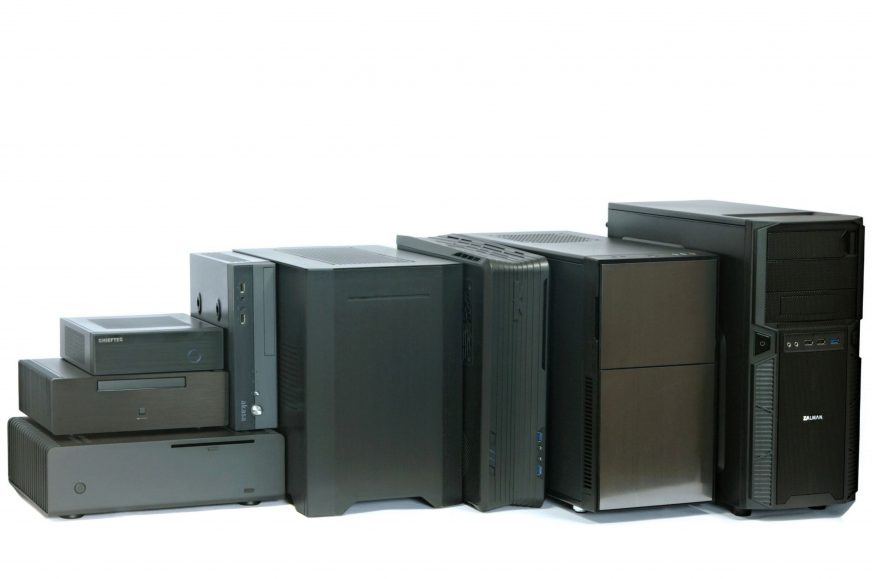
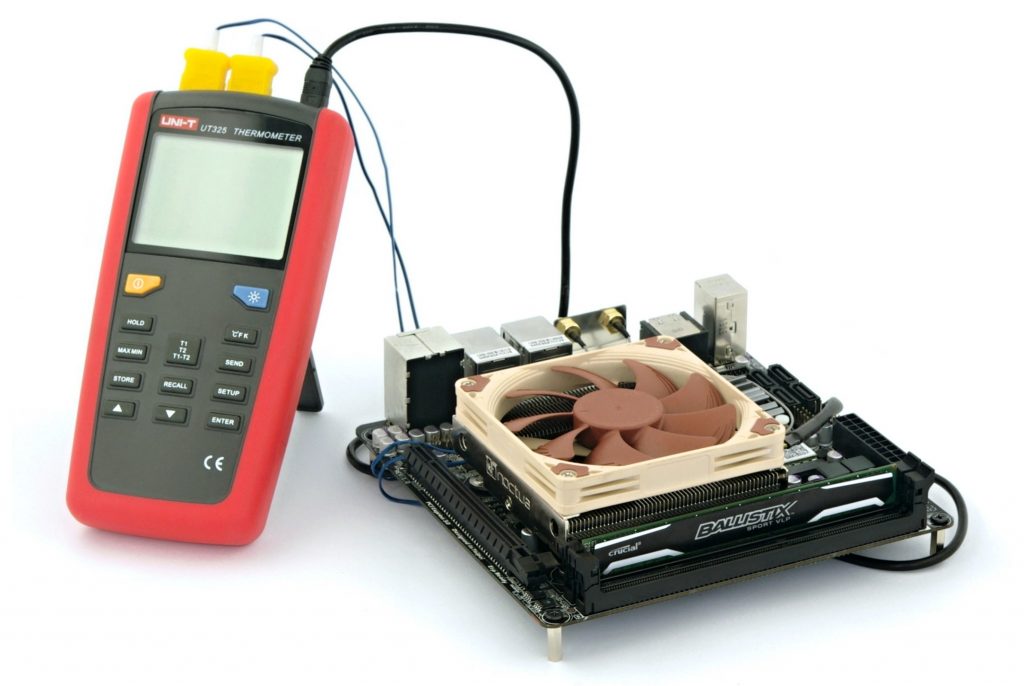
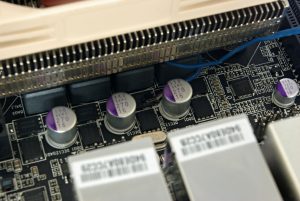
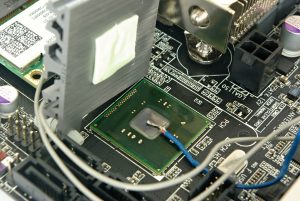
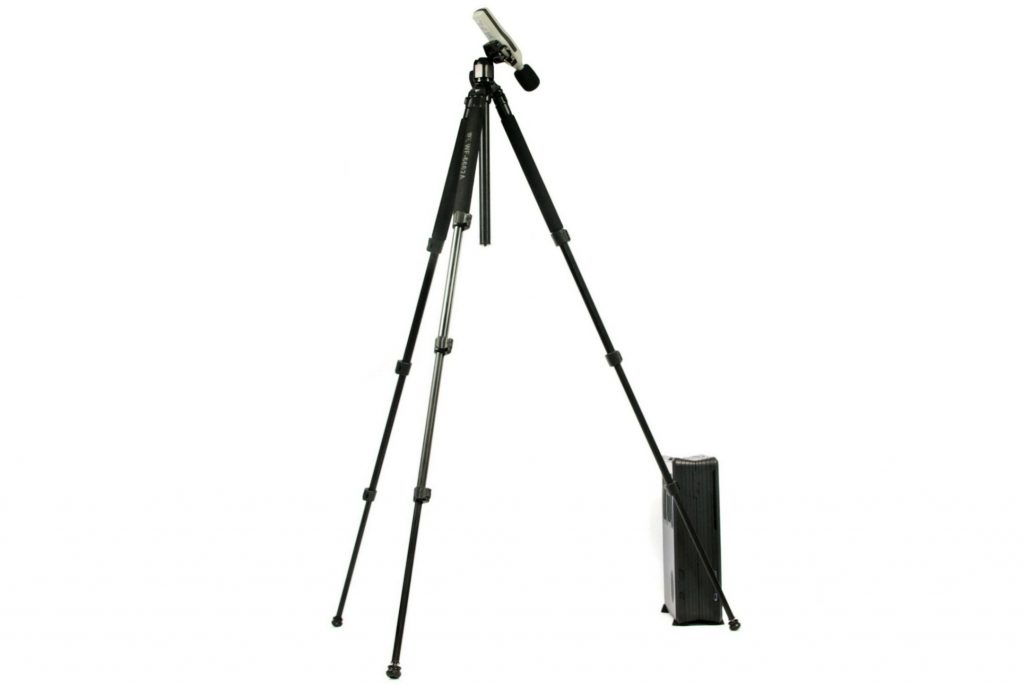
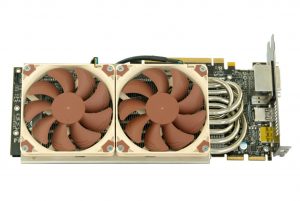
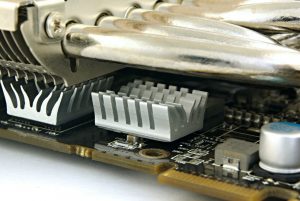
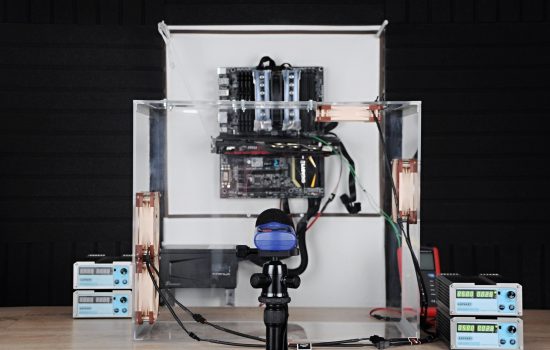
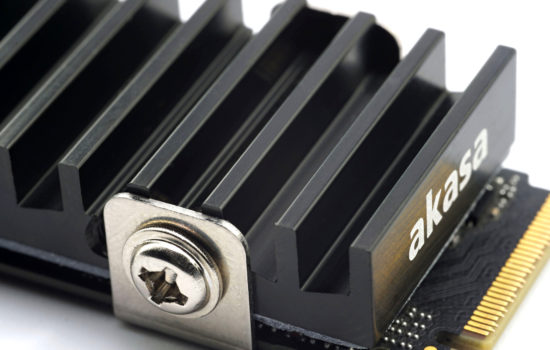
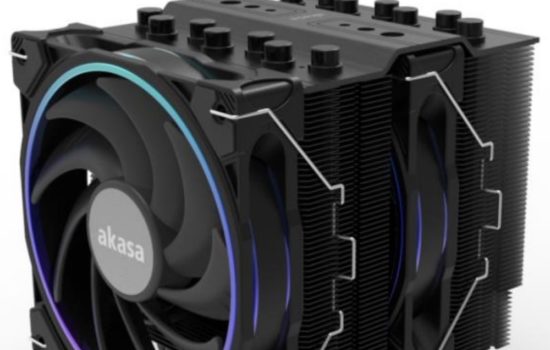



These tests are still relevant today by showing that directed airflow can result in much higher efficiency than raw volume.
Also, some fans caught my eye. The SilverStone slim fan having a ring at the middle is an interesting design choice (though from the limited tests I have found, it performs really poorly). The green fan on the Nanoxia DS4 is intriguing as well, not only for the colour, but also for the seemingly efficient rotor shape.
We have had the SilverStone FW121 low-profile fans with a hoop through the middle of the blades on our testlab shelves for years. But I don’t know how it is with their relevance. They are unavailable in shops, SilverStone filter does not include them anymore. Tests of newer FN124 built on similar design will be more useful… the question is whether they will be up to date even when it will be the time to test them. 🙂
Oh, I thought the FW121 and the FN124 were the same fans.
I believe that there is already a successor to FN124 which is Air Streamer 120 (SST-AS120B), so maybe it’s better to skip FW121 and FN124 and jump to the AS120 from a relevancy standpoint. The ring-in-middle design is very interesting from a academic point of view though, it reminds me of high-speed variants of Gentle Typhoon fans.
Sure, that’s exactly it – an academic point of view. AS120 doesn’t have that hoop anymore. There are a few fans that we will have to test outside their prime time, like the EK-Meltemi. We delayed it until it got EOL status. I find it important to have its results and explain why “it’s not that great”, even though it has a 38 mm thick profile.
Where would you place the thermocouple sensor so that the comparison is objective and you don’t hit the hottest spot with one PSU and the coldest with another?Hmm, 38 mm fans would indeed be interesting. In asian forums especially, quite a few enthusiasts are playing around with industrial fans (Sanyo Denki and Delta to name a few) which of course include 38 mm ones, but usually without any proper tests.
Is the last question intended for me? I must state that I don’t have too much knowledge on thermocouples nor PSUs, but I’d imagine using multiple thermocouples per target site is the answer. While you can’t ensure that you are 100% fair, by increasing sample size, you can be more confident in your results.
Thanks for the tips. Sooner or later, I’m sure the results of some industrial 120 mm fan with 38 mm thickness will appear in the database.
Thermocouples: no, that question got there by mistake, it should have gone elsewhere. It came about by hastily copying from a document in which a colleague is helping me struggle with my severely inadequate English. 🙂